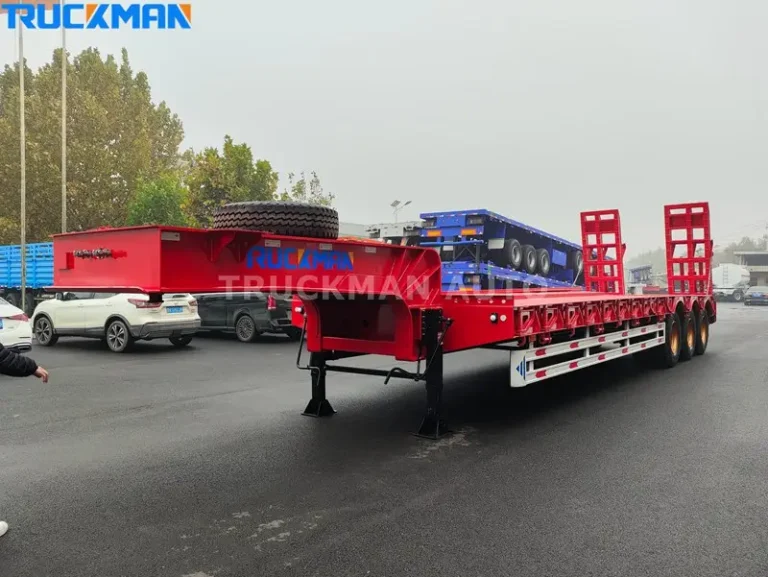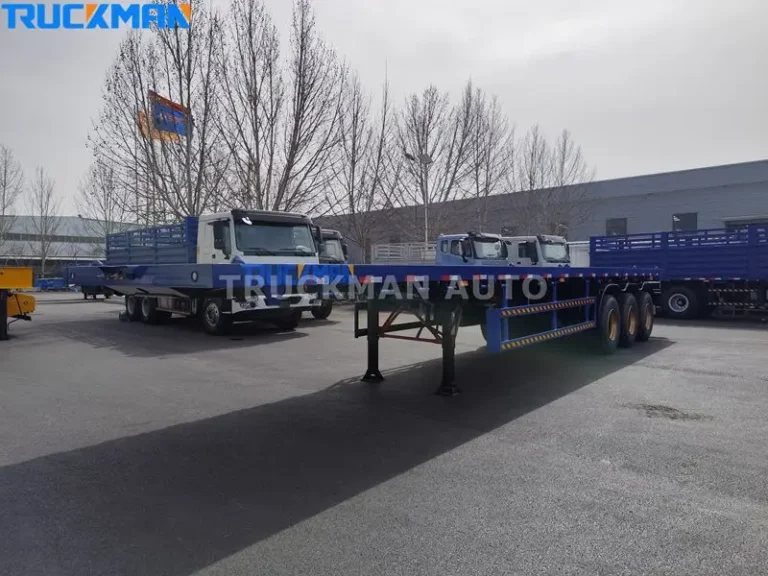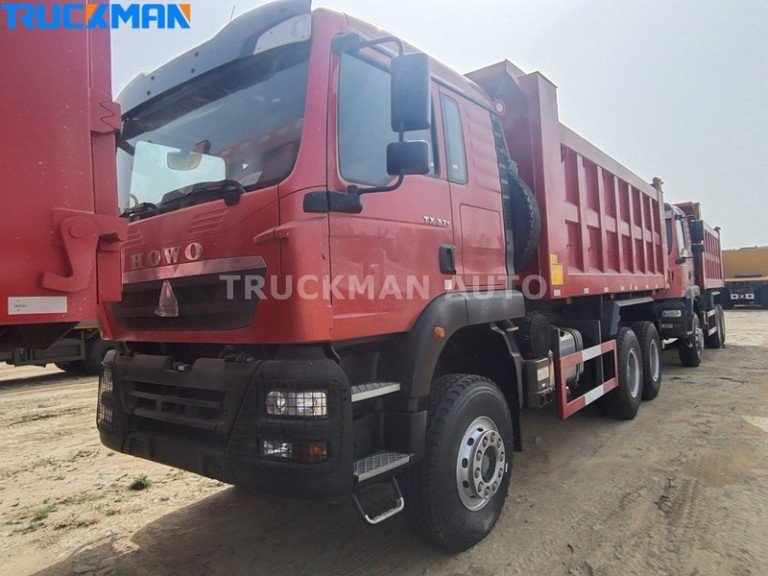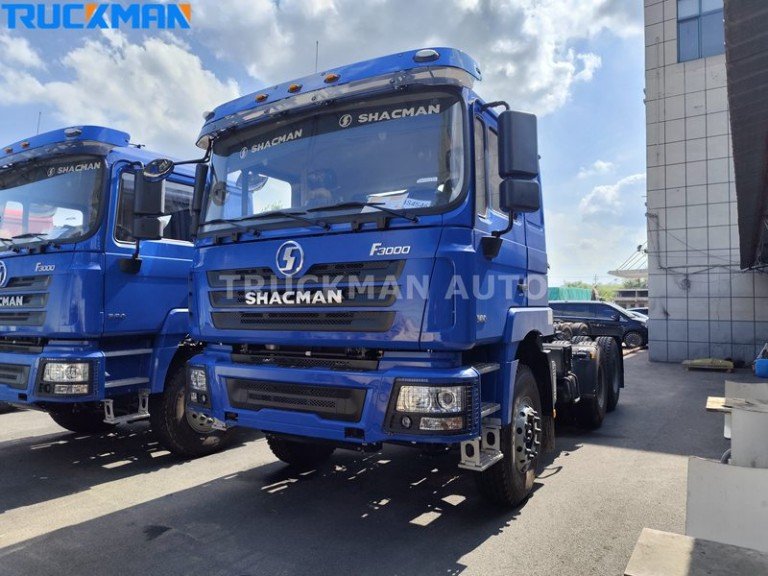A gooseneck hitch is a heavy-duty towing system installed on a pickup truck bed, suitable for agricultural, commercial, and recreational fields, capable of withstanding loads up to 30,000 pounds. This article will explore its basic principles, types, advantages and disadvantages, components, installation guide, and comparison with fifth-wheel hitches to help you choose the right towing solution.
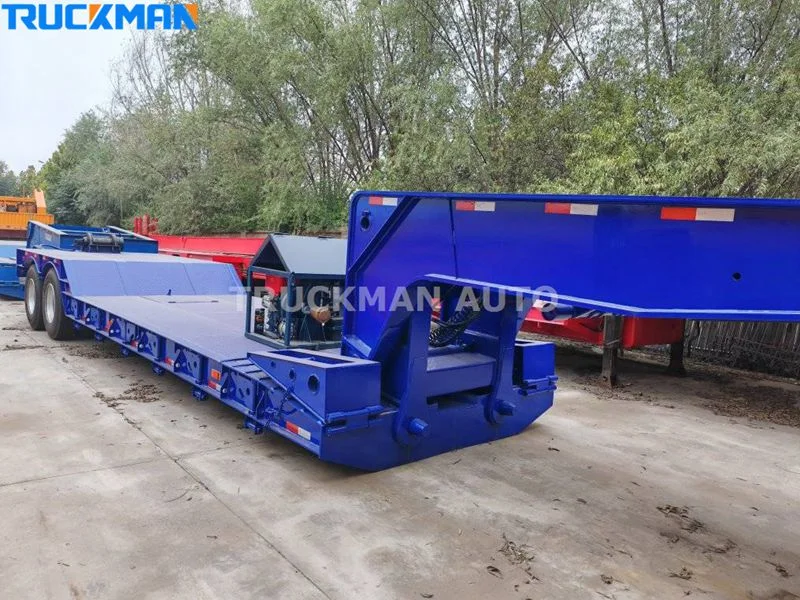
Table of Contents
What is a Gooseneck Hitch?
A gooseneck hitch is the core component of heavy equipment towing, favored for its exceptional stability and control. It is designed specifically for truck beds, capable of easily handling the towing needs of heavy trailers. By connecting a ball to the coupler on the trailer, the gooseneck hitch ensures smooth articulation of the truck during travel.
The ingenuity of its design lies in distributing the trailer’s weight directly above the truck’s rear axle, significantly enhancing overall stability and safety. The working principle is also very intuitive: the ball on the truck bed firmly connects with the trailer coupler, forming a stable connection point. This configuration not only optimizes weight distribution but also enhances vehicle maneuverability, making it an ideal choice for heavy-duty towing.
Whether for beginners or experienced drivers, the gooseneck hitch provides reliable performance, aiding efficient and safe towing operations.
What are the Different Types of Gooseneck Hitches?
Gooseneck hitches are not one-size-fits-all; they come in various types, each with unique features and benefits.
Classification by Installation Method
The installation method of a gooseneck hitch directly affects its stability, ease of use, and occupation of truck bed space. Depending on the vehicle type and usage needs, you can choose under-bed, above-bed, or Puck system designs. These methods each have their focuses, capable of meeting diverse needs from daily use to professional towing.
- Under-Bed Gooseneck Hitch: The under-bed gooseneck hitch is one of the most popular options, secured under the truck bed via dedicated brackets and rails, directly connected to the vehicle frame. This method ensures solid support, particularly suitable for users with frequent heavy-load operations. Although the installation process involves bolting and is somewhat complex, it provides long-term durability and stability while not occupying truck bed space. This hitch performs exceptionally well in heavy-duty applications.
- Above-Bed Gooseneck Hitch: The above-bed gooseneck hitch is fixed on a rail system inside the truck bed, similar to the layout of a fifth-wheel hitch. Compared to the under-bed type, this hitch is relatively simple to install and can be easily removed when not in use, making it particularly suitable for occasional towing users. It does not require significant modifications to the frame, thereby reducing potential vehicle depreciation risks.
- Puck System: The Puck system is an advanced factory-preinstalled variant, commonly found in certain brand trucks. It sets dedicated connection points in the truck bed, allowing the gooseneck ball and safety chains to be locked with a simple rotation. This system emphasizes quick assembly and disassembly, suitable for users who need frequent adjustments. Essentially, it is an optimized version of the under-bed system, offering higher compatibility and convenience.
Classification by Coupler Style
In addition to installation methods, the core components of a gooseneck hitch—the ball hitch and coupler—also have various variants. These coupler styles are designed for different trailer needs, capable of adjusting height, enhancing stability, or reducing vibration, thereby optimizing the overall towing experience. Choosing the right coupler not only improves driving comfort but also extends the equipment’s lifespan.
- Round Tube Coupler: The round tube coupler is the most common universal choice, widely used in various transportation scenarios. It supports height adjustment, capable of adapting to different trailer configurations, providing reliable connections. In daily use, this coupler helps users easily match various height requirements, especially suitable for medium-load towing tasks.
- Square Tube Coupler: The square tube coupler focuses more on strength and stability, adopting a more solid structure, particularly suitable for occasions bearing extremely heavy loads. It can better resist torsional forces, ensuring safety in high-intensity towing. The square tube coupler is especially popular in commercial fields, becoming the first choice for many heavy-duty transportation users.
- Offset Coupler: The offset coupler is designed to provide additional flexibility for short-bed vehicles. It increases the spacing between the trailer and the truck cab, avoiding potential collision risks during turns. This coupler is particularly suitable for towing environments with limited space, such as urban streets or farm paths.
- Cushioned Coupler: The cushioned coupler has a built-in buffering mechanism, capable of effectively absorbing road impacts and vibrations, making the ride smoother while reducing damage to the truck and trailer. This coupler is very suitable for long-distance transportation or rugged terrain towing tasks.
Folding/Flip Ball Gooseneck Hitch
The folding or flip ball gooseneck hitch is an innovative design where the ball can be folded or flipped when not in use, thereby freeing up more truck bed space. This flexibility makes it an ideal choice for multi-purpose truck users, performing exceptionally well in scenarios requiring frequent switching of truck uses.
Fixed Ball Gooseneck Hitch
The fixed ball gooseneck hitch is renowned for its sturdy and reliable characteristics. The ball is permanently installed on the truck bed, providing the highest weight capacity and longest lifespan. The installation process for this hitch is relatively simple, while reducing initial and long-term maintenance costs, particularly suitable for users needing high-strength towing. However, the main drawback of the fixed ball hitch is that it occupies truck bed space, which may impose certain restrictions on other uses. Therefore, this hitch is more suitable for dedicated towing vehicles or commercial application scenarios, performing exceptionally well in cases requiring continuous heavy-load operations. For users pursuing ultimate stability and durability, the fixed ball gooseneck hitch is undoubtedly a trustworthy choice.
Gooseneck vs. Fifth-Wheel Hitch: Making the Right Choice
For users needing to tow large trailers, choosing between a gooseneck hitch and a fifth-wheel hitch is a crucial decision. This not only affects towing performance but also directly relates to driving safety. The final choice should be based on trailer type, towing frequency, and personal preferences. According to statistics, gooseneck hitches are more popular in commercial applications, while fifth-wheel hitches hold a place among recreational users due to their stability.
Key Differences in Design and Function
Gooseneck hitches and fifth-wheel hitches have significant differences in design and function. Gooseneck hitches connect via a ball and coupler, typically installed under the truck bed, suitable for towing livestock trailers and commercial trailers. Their design is not only concise but also leaves more cargo space in the truck bed, facilitating multi-purpose use. In contrast, fifth-wheel hitches use a jaw and kingpin connection, installed on a rail system inside the truck bed, usually for towing large RVs. Fifth-wheel hitches provide a more stable riding experience but occupy significant truck bed space. According to comparisons, gooseneck hitches have a simpler structure, with weight capacities typically exceeding 30,000 pounds, while fifth-wheel hitches generally range from 16,000 to 25,000 pounds.
Weight Capacity Comparison
Although both gooseneck hitches and fifth-wheel hitches have high weight capacities, their design differences affect load distribution and stability. Gooseneck hitches are renowned for their simplicity and powerful capacity, particularly suitable for commercial and agricultural scenarios, capable of easily handling heavy-duty towing tasks. Fifth-wheel hitches, although more complex in structure, provide superior stability for high-center-of-gravity trailers (such as RVs), performing exceptionally well in long-distance travel. In extreme heavy-load conditions, gooseneck hitches often have a slight edge, while fifth-wheel hitches are more suitable for scenarios requiring additional stability.
Which Hitch Type Suits Your Needs?
The choice between gooseneck hitches and fifth-wheel hitches ultimately depends on your specific towing needs. For commercial and agricultural uses, gooseneck hitches are favored for their higher weight capacity, lower cost, and efficient use of truck bed space. They are the ideal choice for towing livestock trailers, equipment, and other heavy cargo. On the other hand, recreational users towing large RVs may prefer the stability and comfort of fifth-wheel hitches, especially in long-distance travel.
Budget is also an important consideration. Gooseneck hitches are usually more cost-effective than fifth-wheel hitches, suitable for budget-sensitive buyers. Additionally, for users needing mixed uses, adapters can make gooseneck hitches compatible with fifth-wheel hitches, achieving multifunctionality. This flexible solution provides more options for users who need to switch between different towing scenarios.
Whether choosing a gooseneck hitch or a fifth-wheel hitch, comprehensive consideration based on towing needs, budget, and vehicle configuration is required. Gooseneck hitches dominate in commercial and agricultural fields with their high capacity and flexibility, while fifth-wheel hitches become the preferred choice for recreational users due to their stability and comfort. By understanding the characteristics and applicable scenarios of both, you can more easily make an informed choice, ensuring efficient and safe towing tasks.
Conclusion
Choosing the right gooseneck hitch is key to ensuring safe and efficient towing, and at Truckman Automobile, we understand this well. As experts in detachable gooseneck semi trailer , we are committed to providing superior solutions for users pursuing strength, multifunctionality, and convenience. Whether you prefer the Puck system, under-bed design, or other types of gooseneck hitches, our products can meet your needs and significantly enhance your towing experience.
Each type of gooseneck hitch has its unique advantages, but proper installation, regular maintenance, and understanding of equipment limitations are the foundation of safe towing. We always recommend that customers invest in high-quality components and seek professional installation services when necessary. In this way, you can not only obtain years of reliable service but also tow heavy loads with confidence.
Additionally, we understand the importance of multifunctionality to many users. Our gooseneck hitch systems not only adapt to various vehicles but can also be compatible with fifth-wheel systems through adapters, providing you with a wider range of application scenarios. Whether for commercial transportation or recreational uses, Truckman Automobile’s semi-trailer solutions can help you easily handle various towing challenges.
FAQ
What is the Typical Weight Capacity of a Gooseneck Hitch?
The weight capacity of a gooseneck hitch varies by type and brand, but most can handle loads from 20,000 to 30,000 pounds. This high capacity makes it an ideal choice for heavy-duty towing, especially in commercial and agricultural scenarios.
What is the Difference Between a Gooseneck Hitch and a Fifth-Wheel Hitch?
A gooseneck hitch is installed in the truck bed, typically connecting via a ball and coupler, with a more concise design suitable for heavy-duty commercial uses. In contrast, a fifth-wheel hitch is installed above the rear axle, using a jaw and kingpin connection, providing more stable weight distribution and riding experience, especially suitable for towing large RVs.
How to Choose the Right Gooseneck Hitch for My Truck?
When choosing the right gooseneck hitch, consider towing capacity, truck bed size, and trailer type comprehensively. It is recommended to consult experts or the manufacturer Truckman for personalized recommendations to ensure the hitch perfectly matches your vehicle and towing needs.
Can I Use a Gooseneck Hitch with Any Type of Trailer?
Gooseneck hitches are typically designed for specific types of trailers, such as livestock trailers or equipment trailers, so they may not be compatible with all trailer types. Before use, be sure to check the manufacturer’s specifications to confirm the compatibility of the hitch with the trailer.

